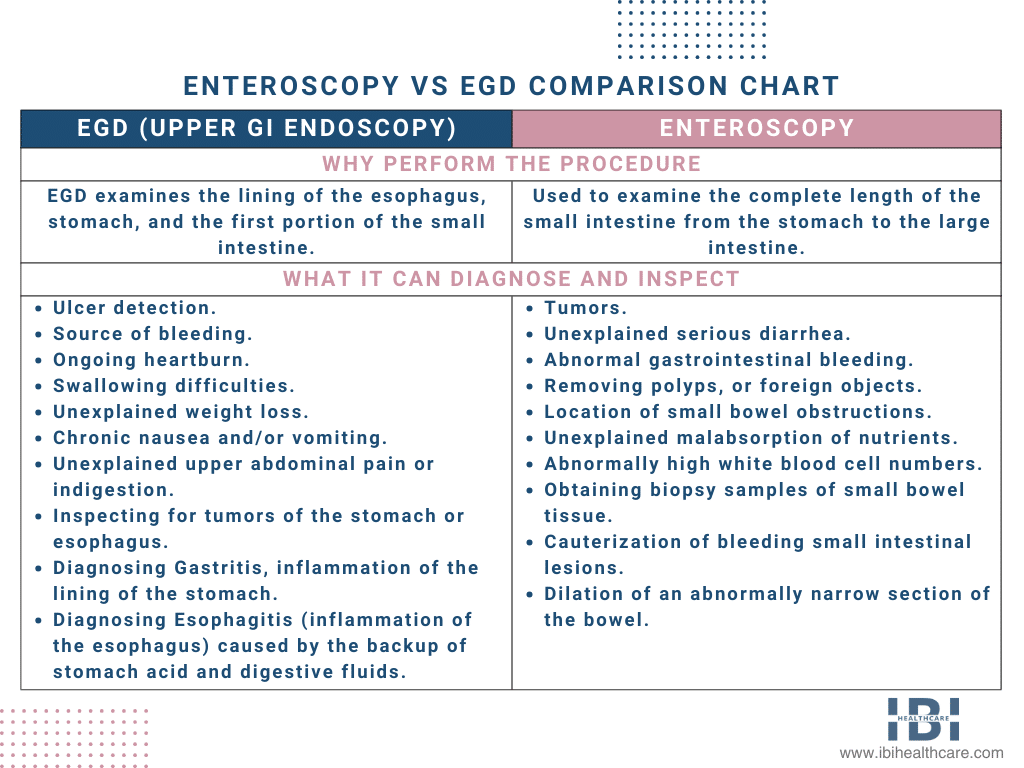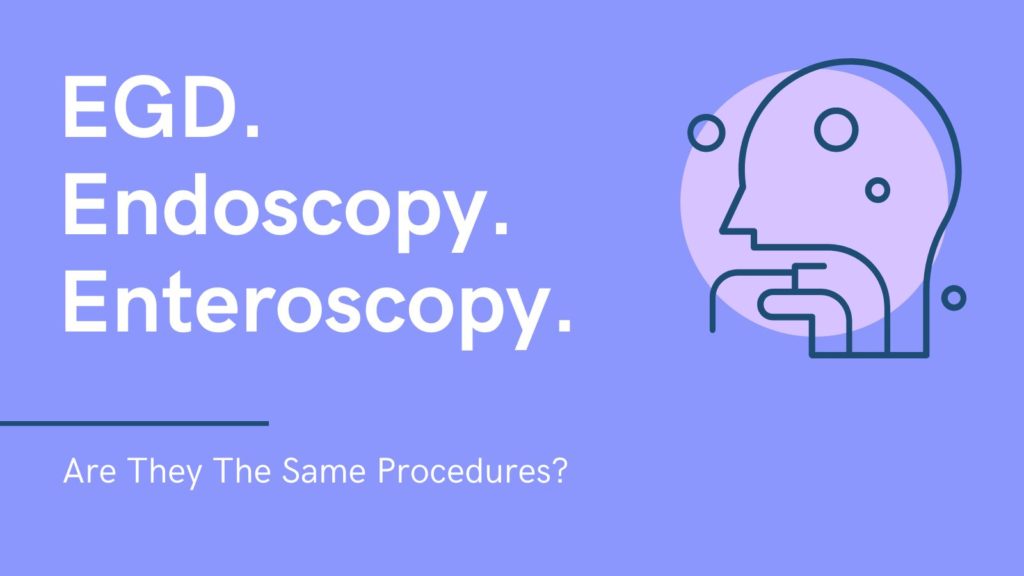Sometimes medical terms and abbreviations can be confusing and many of them sound similar making it quite a challenge to decipher between them. Nevertheless, today we are going to look at a comparison of the terms endoscopy vs. EGD and enteroscopy vs. upper GI endoscopy. All these terms are related but they each have a specific meaning.
EGD vs. Endoscopy vs. Enteroscopy
What is an Endoscopy?
Endoscopy, a medical procedure, utilizes a specialized device known as an endoscope. This device, which resembles a thin flexible tube, has a small camera and a light. Doctors use it to examine various parts of the esophagus, stomach, upper GI tract, or small bowel.
During this procedure, a gastroenterologist guides the process with a live video transmitted from the camera to a monitor in the operating room. Surgeons perform these endoscopic procedures, also referred to as endoscopy, using an endoscope.
Additionally, an endoscopy allows for the precise exploration and evaluation of internal organs, aiding in the diagnosis and treatment of various conditions and diseases.
What Does EGD Mean?
EGD is the abbreviation for the esophagogastroduodenoscopy procedure that is performed to closely inspect the stomach, the lining of the esophagus, and the first part of the small intestine also called the duodenum.
This procedure is commonly known as an Upper GI endoscopy probably because no one can pronounce the medical term. When comparing the terms EGD vs. endoscopy, simply put, EGD is a form of endoscopy that looks at the upper portion of the gastrointestinal tract from the mouth to the beginning point of the small bowel.
What is an Enteroscopy?
An enteroscopy, which is similar to an EGD, allows for a deeper examination of the gastrointestinal tract. Generally, in comparing an enteroscopy to an upper GI endoscopy, the main difference lies in the extent of the examination within the intestines. Specifically, the enteroscopy is designed to advance further into the patient’s intestines using one of three techniques.
Enteroscopy with a Double-Balloon
The endoscope utilizes two tiny balloons that inflate and deflate, propelling the tool along the intestinal pathway. This procedure, known as push-and-pull enteroscopy, is often employed.
Enteroscopy with a Single Balloon
This technique, commonly known as push enteroscopy, uses one small balloon located at the endoscope end to advance it along the intestines.
Spiral Enteroscopy
This technique utilizes a special device that rotates clockwise, progressing it down the intestinal pathway. It proves particularly beneficial for patients with limited intestinal areas.
What is the Difference between Endoscopy and Enteroscopy?
These two terms are very similar but have different meanings. Specifically, endoscopy is a definition used to describe a group of procedures that are carried out with the use of an endoscope.
On the other hand, enteroscopy is a type of endoscopy that employs one of three different techniques to advance the special endoscopic tool far enough to examine the entire small intestine.

How is an EGD vs. Enteroscopy Performed?
Esophagogastroduodenoscopy (EGD) and Enteroscopy are similar procedures but have distinct differences. Firstly, both are endoscopic procedures, yet the enteroscopy stands out for its ability to examine the entire length of the small intestine. Although, the EGD procedure solely focuses on investigating the upper portion of the gastrointestinal tract.
Enteroscopy and EGD both require the patient to refrain from consuming any food or beverages for at least 8 hours before the procedure. Additionally, the doctor will guide the patient’s regular medication intake and instruct them to cease usage of medications like aspirin and blood thinners.
The EGD procedure typically requires about 45 minutes to complete. An enteroscopy can take up to 2 hours depending on the specific examination.
Both procedures contain the same basic steps:
- We administer a sedative to help the patient relax during the procedure.
- We apply a numbing solution to the patient’s throat.
- We gently guide the endoscopic tool down the patient’s throat. Projecting a real-time video image onto a monitor located near the gastroenterologist while simultaneously recording the footage for future viewing.
- We perform necessary repairs and collect biopsy samples as needed.
What is the Recovery After an Enteroscopy vs. Upper GI Endoscopy?
The medical staff performs both procedures as outpatient procedures, so they send patients home on the same day. A friend or a family member must drive the patient home. Because they will still be a bit groggy from the sedation. However, some patients experience mild side effects after these procedures that may include
- Sore throat.
- Abdominal bloating.
- Mild abdominal cramping.
- A small amount of bleeding.
- Nausea from the sedation medication.
The doctor will provide a list of rare but serious situations and instructions to contact them if any should occur.
Furthermore, contact IBI Healthcare Institute if you have any questions or concerns regarding your health. Additionally, you can learn more about endoscopy, enteroscopy, or upper GI (EGD) procedures. Moreover, our team of experts is here to address your concerns. Above all, they can help determine if you are a candidate for one of these procedures. Lastly, set up a consultation today to learn more about diagnosing issues of the upper gastrointestinal tract.











